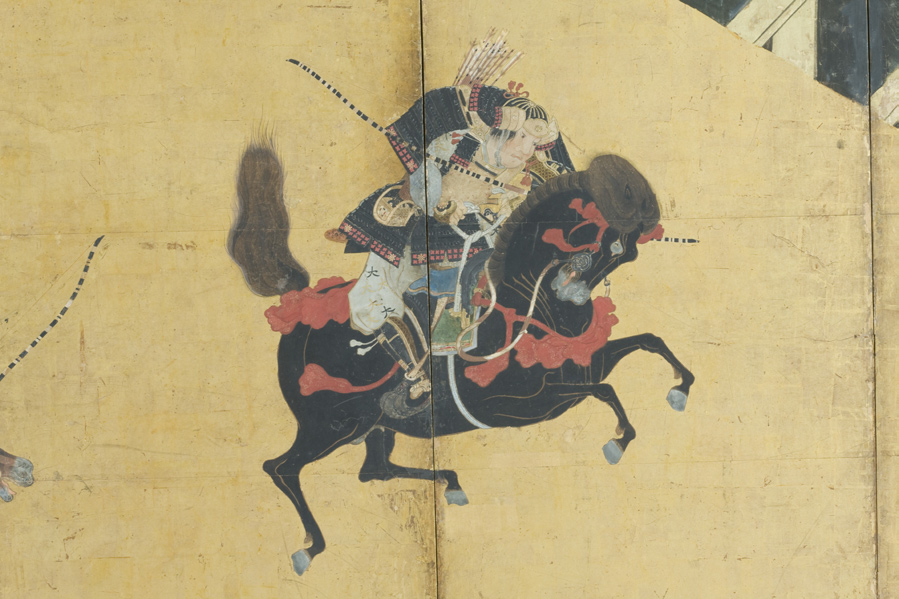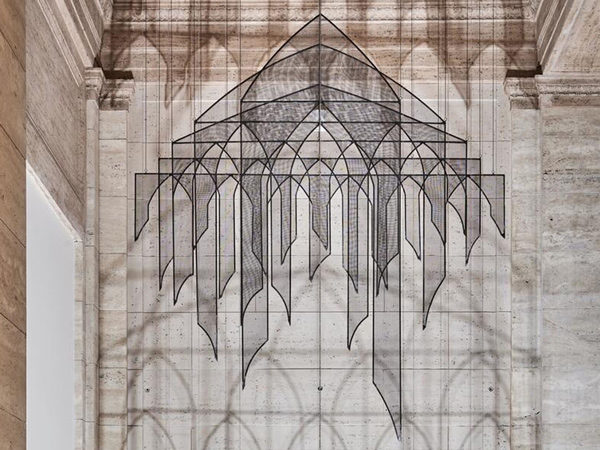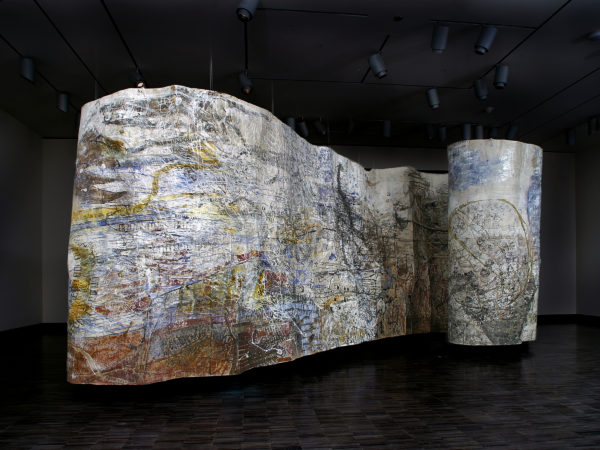Activity
First Man Across the Uji River
The first man across the Uji River and the battle of Awazugahara, From The Tale of the Heike, one of a pair, late 1600s. Japan. Six panel folding screen; ink, colors and gold on paper. The Avery Brundage Collection, B60D60+.

The First Man Across the Uji River
What is this object?
Painted folding screens like this one were commonly used as room dividers and decorative backdrops for ceremonial occasions. This example, probably made for a samurai patron, is decorated with scenes from a popular war tale describing the exploits of legendary warriors. The sumptuous gold leaf background seen here served a dual purpose: symbolically, it makes a statement about the samurai’s wealth and power, but in practical terms it also provided a reflective surface, helping to illuminate the dark interior spaces of the castle.
What is depicted here?
The subjects are derived from a chronicle of military history known as The Tales of the Heike. Written in the 1200s, The Tales of the Heike recounts the war between two samurai clans, the Taira (or Heike) and Minamoto (or Genji). Imbued with the Buddhist belief in the transience of all living things, the Heike focuses on the tragic and triumphant episodes leading up to the fall of the Taira in 1185.
This screen highlights a famous competition between two Minamoto warriors. During the course of a military campaign, the Minamoto forces came to the banks of the Uji River. Finding the river flooding and the bridge partially dismantled by the enemy their leaders debated how best to cross over. Two warriors, Kagesue and Takatsune, ride up to the river, each having decided to be the first across. As they dash forward, with Kagesue in the lead, Takatsuna shouts out, “This is the biggest river in the west. Your saddle girth looks loose; tighten it up!”1 With Kagesue’s attention diverted, Takatsuna seizes the lead, riding across the river and ascending the opposite bank, while his rival floats downstream. In the painting, five mounted samurai approach the river’s edge, with Kagesue leading on a black horse, and Takatsuna calling to him from the back of a chestnut mount. At the upper right corner are the struts of the partially dismantled bridge.
How does this painting reflect samurai values?
Stories like The Tales of the Heike were used to glorify and romanticize the heroic deeds of earlier samurai. The rivalry between Takatsuna and Kagesue highlights military strategy and horsemanship. Tomoe, one of the few female warriors in Japanese legend, is revered as a model of loyalty, courage, and strength for acts like the one depicted here.
1Helen Craig McCullough, trans., The Tale of the Heike (Palo Alto: Stanford University Press, 1994), 307–308.








